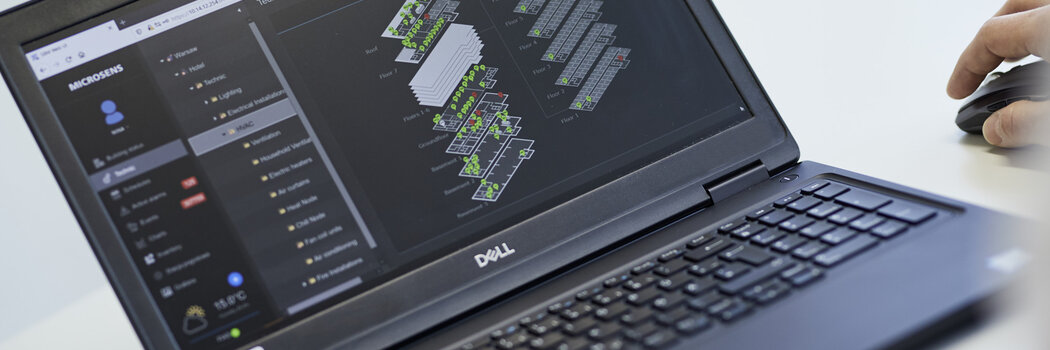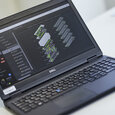With the Smart Building Manager, building technology components can be managed building-wide with just one tool. The components only have to be configured once, because the Smart Building Manager scans the entire system, determines the configuration of the components and makes the data available to all the processes it manages and controls. Configurations can be distributed building-wide at the click of a mouse. In office buildings and hotels, where many rooms are similar, device configurations are created for just one room and, once approved, automatically distributed to devices in all similar rooms.
"Everything only has to be touched once," says Dominik Zühlke, Technical Consultant for Smart Building Solutions at MICROSENS GmbH & Co. KG in Hamm, Germany. "Components are assigned their data, and all instances access it, resulting in much less effort for setup, operation and changes."
Visualization of relevant data
Smart Building Manager's virtual dashboard provides the occupancy and consumption values that are important for efficient building management in diagram form for PC, tablet and smartphone. Users can create their own diagrams with little effort. Integration into existing graphical user interfaces is possible.
With small software modules, the so-called portlets, the Smart Building Manager can be adapted to the individual wishes and special requirements of the customer. Additional functions can also be retrofitted via a portlet during operation. Existing configurations and settings that are not affected by a new portlet remain unchanged.
The license model is based on the number of data points managed in the Smart Building Manager. If the number of manageable data points from the basic license is not sufficient, the total number can be increased via extensions. This means that users only pay for what they actually need and can expand the Smart Building Manager as required at any time.
Integration of existing devices and components
Existing ModBus/TCP devices can be integrated directly into the Smart Building Manager, while the integration of other digital and analog building technology components is handled by the optionally available Smart I/O controllers. Existing, proven hardware can thus continue to be used.
Time processes can be configured centrally via the scheduler, for example to switch off the lighting after work and on weekends and to move heating/air conditioning to the lowered range.
"The Smart Building Manager offers much more than classic building automation," Dominik Zühlke summarizes. "It controls the building technology, monitors and updates device configurations, it visualizes all relevant operating variables and consumption values, and it provides the user with the information and functions he needs in a clear manner. In this way, it enables optimized, efficient building operation, which I haven't seen before with conventional solutions."












